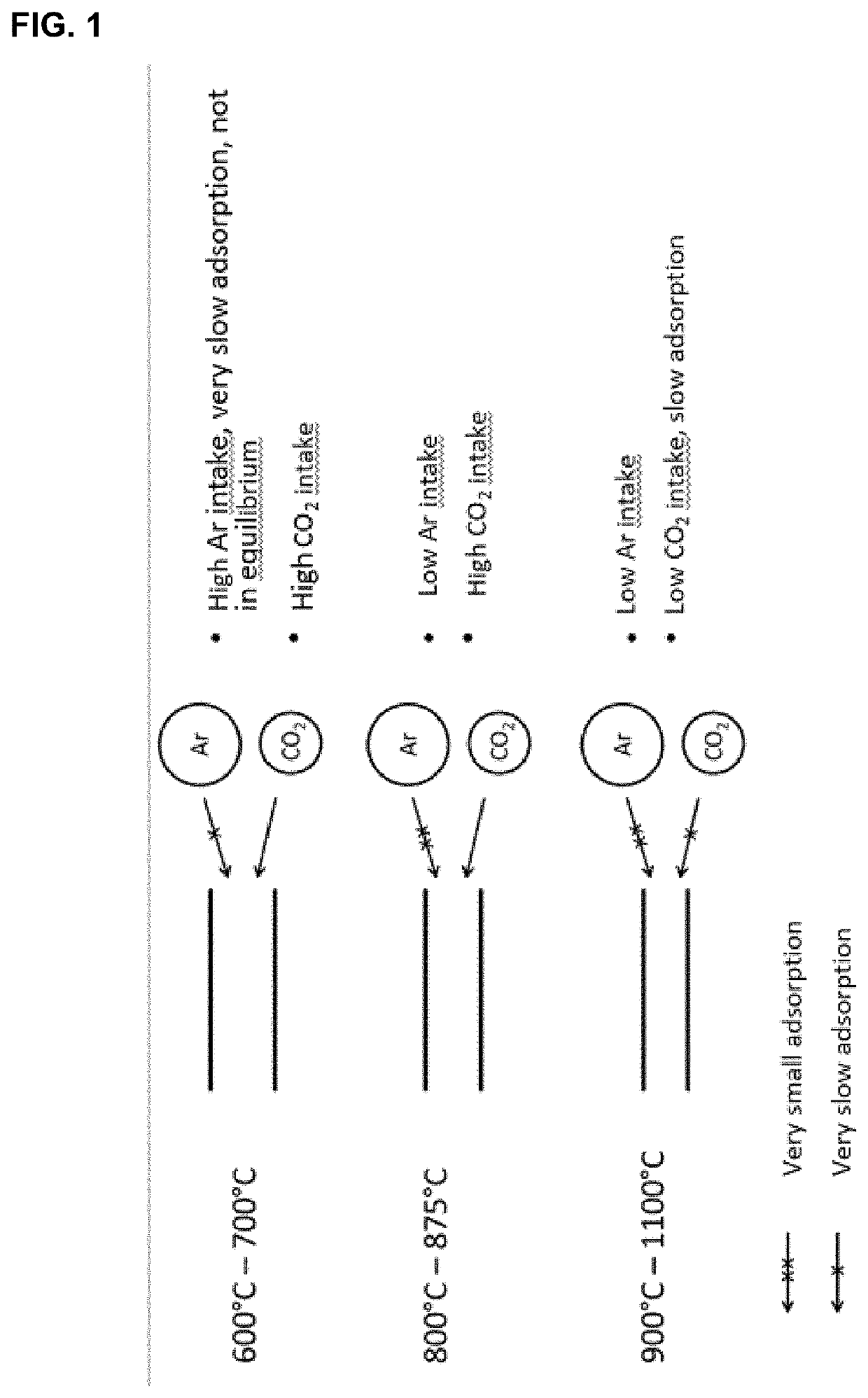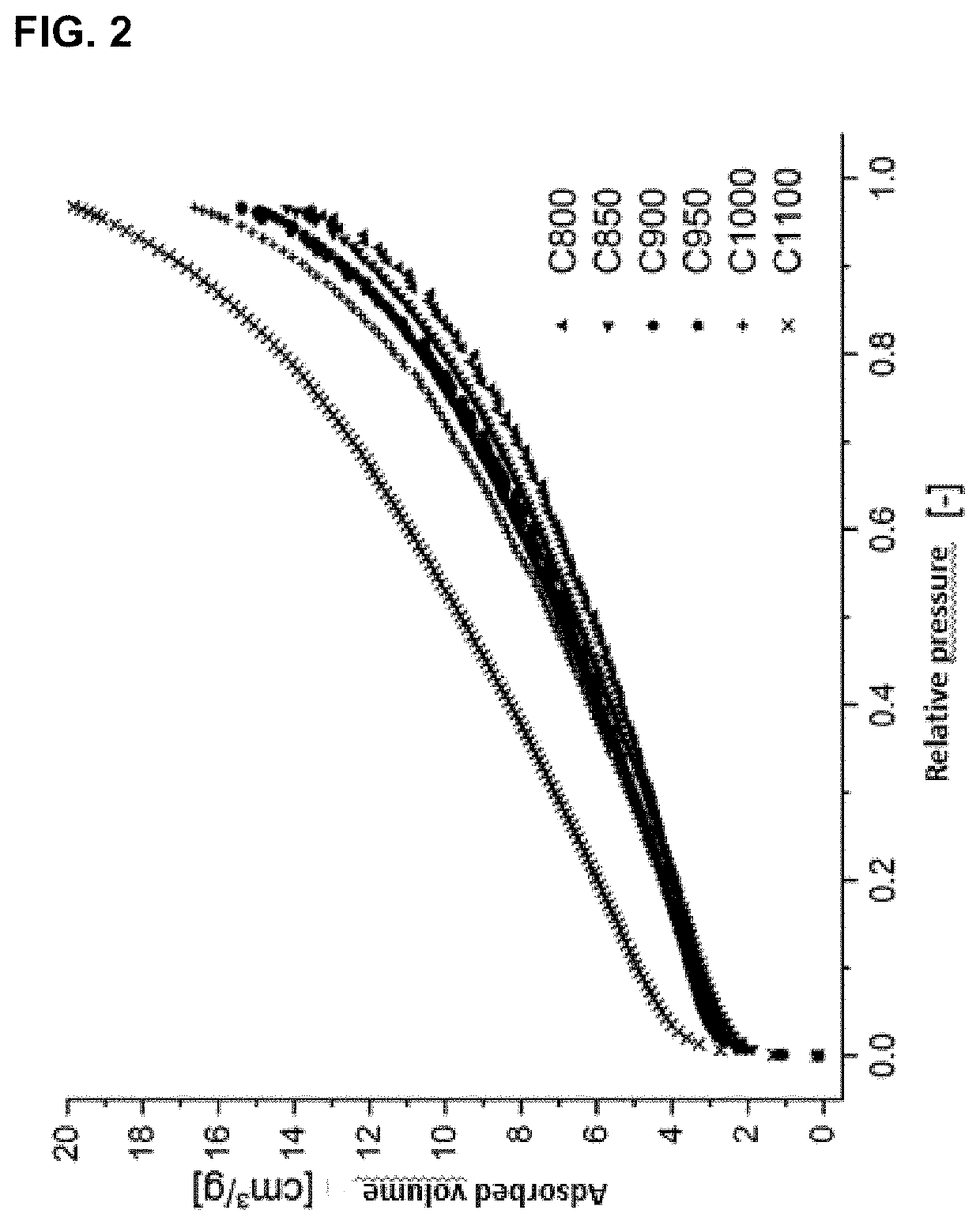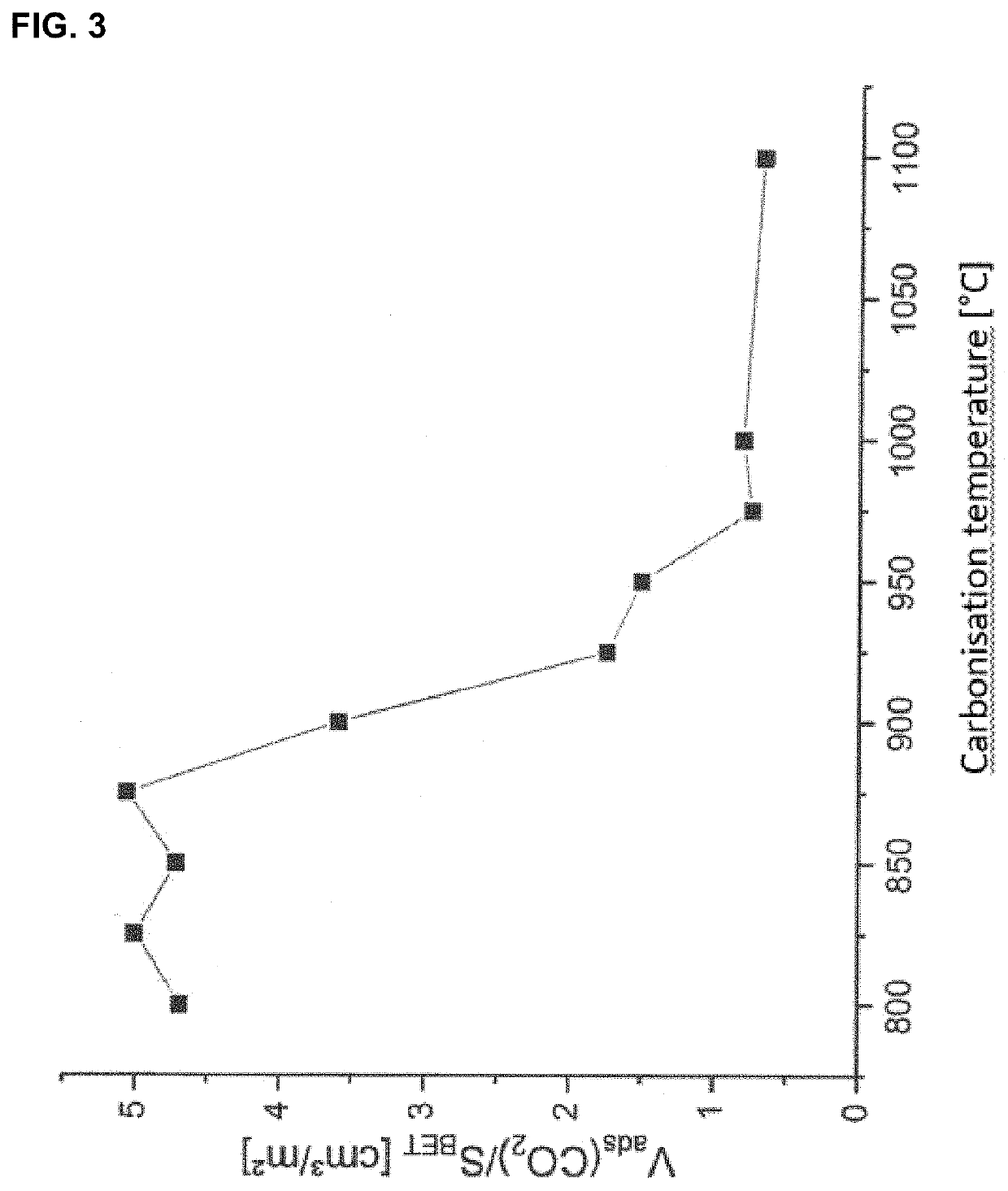Process for producing carbon fiber materials for separating co2 or nh3 from gas mixtures, carbon fiber materials and its use
- Summary
- Abstract
- Description
- Claims
- Application Information
AI Technical Summary
Benefits of technology
Problems solved by technology
Method used
Image
Examples
example 1
[0124]PAN from sigma-aldrich or BOC Sciences with a molecular weight of 150,000 g / mol was used.
[0125]Carbon fibers were prepared by electrospinning. First, solutions of 10% polyacrylonitrile (PAN) in dimethylformamide (DMF) were prepared. For this purpose, 4 g of PAN was dissolved in 36 g of DMF under stirring with a magnetic stirrer at room temperature for two days. The different samples were prepared from the same solution. The solution was spun directly into fiber mats in a controlled atmosphere by an electrospinner from IME Technologies. The parameters shown in Table 6 were used for this purpose.
TABLE 6Standard parameters for elektrospinningClimateTemperature25° C.Humidity20%MaterialFlow rate40 μL / minVolume2.2 mLSpinning time1 h / 2 hPAN wt %10Lateral MovementTotal distance100 mmStart position−50 mmDistance100 mmSpeed20 mm / sReversal delay500 msDistancesNeedle-collector140 mmInner needle diameter0.8 mmCollector movementRotation1500 UpmVoltagePositive electrode21 kVNegative Electrod...
example 2
[0127]A 10 wt % solution of PAN (Mw 150,000 g / mol) in DMF was prepared by adding 8 g PAN to 72 g DMF and stirring at room temperature for two days. This solution was used in the electrospinning process to prepare PAN nanofiber mats. The process was carried out in a controlled atmosphere with the parameters given in Table 7:
TABLE 7Parameters for the electrospinning process using a 10 wt % solution of PAN in DMFClimateTemperature25° C.Humidity30%MaterialFlow rate40 μL / minVolume14.6 mLSpinning time6 hPAN wt %10Lateral movementTotal distance120 mmStarting position−60 mmDistance120 mmSpeed20 mm / sReversal delay500 msDistancesNeedle-collector180 mmInner needle diamater0.8 mmCollector diameter60 mmCollector movementRotation1500 rpmVoltagePositive electrode21 kVNegative electrode−4 kV
[0128]Subsequently, the obtained PAN nanofiber mats were dried at 150° C. for 1 h. Crosslinking was carried out in an air atmosphere at 250° C. overnight (18 h). For carbonization, the samples were heated at a h...
PUM
| Property | Measurement | Unit |
|---|---|---|
| Temperature | aaaaa | aaaaa |
| Temperature | aaaaa | aaaaa |
| Temperature | aaaaa | aaaaa |
Abstract
Description
Claims
Application Information
 Login to View More
Login to View More - Generate Ideas
- Intellectual Property
- Life Sciences
- Materials
- Tech Scout
- Unparalleled Data Quality
- Higher Quality Content
- 60% Fewer Hallucinations
Browse by: Latest US Patents, China's latest patents, Technical Efficacy Thesaurus, Application Domain, Technology Topic, Popular Technical Reports.
© 2025 PatSnap. All rights reserved.Legal|Privacy policy|Modern Slavery Act Transparency Statement|Sitemap|About US| Contact US: help@patsnap.com



